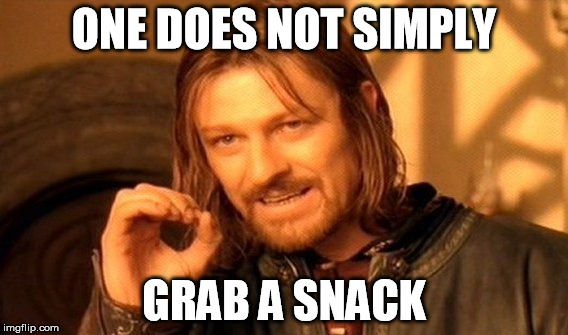5 Great Snacks For the Coder’s Brain
You’re coding and you’ve been in the flow for a few hours. Everything is going just fine, but then hunger strikes suddenly. Since you don’t have anything on hand, you go to the cafeteria or to a nearby café to grab a muffin or a pastry full of sugar. When you sit down to resume coding while eating your snack, you feel good for a few minutes, but the sugar spike soon wears off. You start feeling like crap, and your productivity screeches to a halt. Sounds familiar?

This happens to everybody from time to time. Working with your brain makes you hungry very fast, but eating a large sugary snack to compensate and topping it with an energy drink is the least productive way to go about it. If you’re well prepared and have good quality snacks on hand, you won’t feel like crap after eating and you will be able to resume coding in no time. Great snacks are also power foods that are great for your health, so it’s worth adding them in your diet.
So here are a few snacks you should try:
- Nuts and seeds: this is one of the best power snack to keep around since they store well and you don’t need to eat a lot to feel better. You should be making your own mixes if you can, since most trail mixes available on the market are too salty, too sugary or both. You can add all your favourite nuts, but almond, walnut, brazil nuts, pumpkin seeds and sunflower seeds are all great choices. You can add a bit of quality dark chocolate or dried fruits to the mix for more variety.
- Fresh fruits: All fruits are also good snacks. You can bring along anything from bananas and apples, but for pure nutritional values berries are the best. I don’t recommend fruits like kiwi that need to be peeled since you don’t want to mess around when you want something quick. Fruits can also be kept at your desk for a few days if you want to bring some in advance.
- Yogurt or kefir: Yogurt is a great source of protein and probiotics, but you should choose yogurt with as little sugar as possible: you can add your own fruits if it’s too bland for you. I’ve started drinking kefir recently, which is a fermented milk drink with even more good bacterial than yogurt. It’s interesting but it’s an acquired taste, being a lot sourer than yogurt.
- Egg, fish or avocado: Those require a bit more preparation, but the proteins and good fats that make it worth it. Boiled eggs takes only a few minutes for a week’s supply and are easy to eat. Avocados are also fast to prepare: just cut them in two, add some mustard or lime juice and pack them in your lunch. Half an avocado is enough for a snack, and it can easily be eaten with a spoon. And you can bring canned sardines or smoked salmon, which requires no preparation.
- Vegetable sticks: All raw vegetables that can be cut into sticks like carrots, celery and peppers are good options. If you don’t have time to cut vegetables, you can buy bags of precut vegetables at the grocery store. Pair them with some hummus dip for added protein and you’ll have a great snack on hand. This is a good way to add more vegetables to your diet, we could all do with more of them.
As an aside, if you really like muffins and can’t do without, you can make your own whole grain muffins and use less sugar. Homemade muffins will give you less of a crash than white flour and allow you to add more fruits, nuts and seeds. You can also make smaller portion when you bake them yourself, since most store-brought muffins are huge. This is a bit heavier than the other snack options, taking more energy to digest. Many people have trouble when they eat too much grains or gluten, so you should try it and see what works for you.
Which snack are you going to try? Do you have a favorite snack that’s not on the list? I’m always on the lookout for new ideas, so please share your routine!